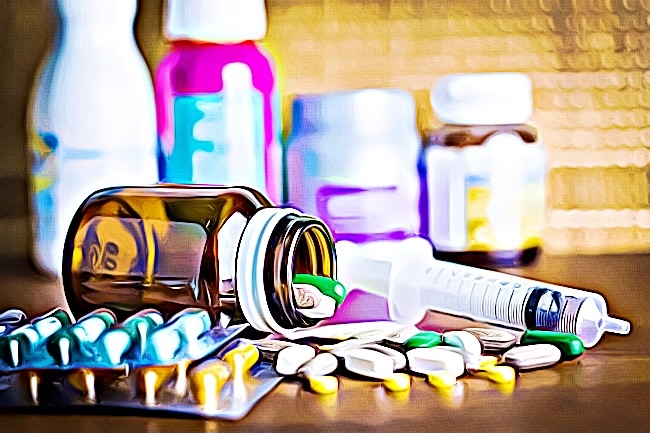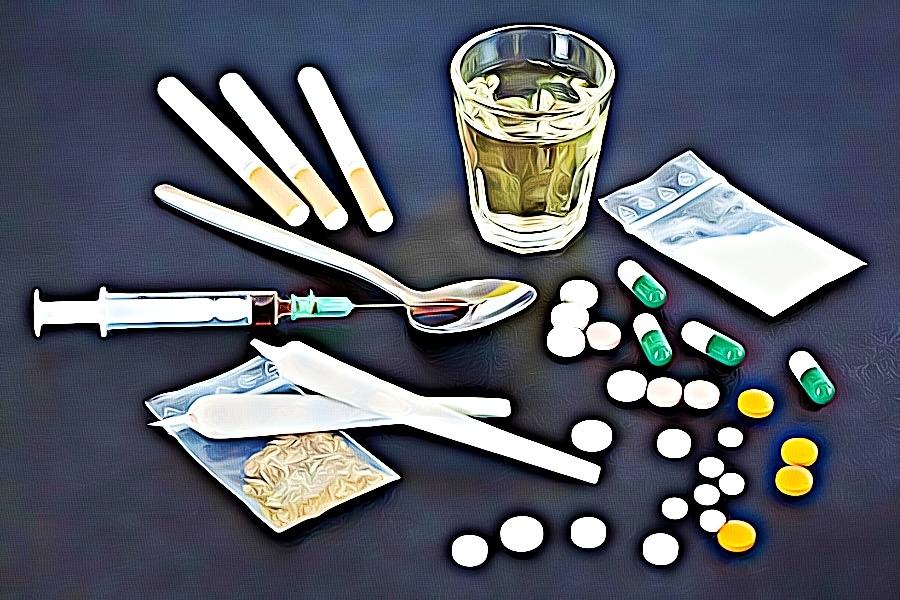One of the most frightening things about substance abuse is that there are so many different drugs. Plenty of these drugs are illegal, but contrary to popular belief, many addictive substances are legal and easy to find.
Nowadays, there are so many slang terms for drugs that it can be challenging to try and make sense of them all. For parents caring for impressionable children and for concerned friends who know someone recovering from drug addiction, it is important to familiarize yourself with all the words and slang. Knowing even just a few basic terms can help you nip the bud before things get too bad.
To help you identify if your loved ones are using again, here is a list of common drugs, categorized according to type. We have also provided you with their street names and codenames to help you understand if drugs are being discussed secretly in your presence. With no further ado, here they are:
Stimulants
Stimulants (or uppers) are substances designed to increase alertness and energy. Cocaine, amphetamines, and methamphetamine fall under this category. There are plenty of innocuous stimulants available on the market, but people with a substance abuse problem may abuse these by crushing the tablets and swallowing, injecting, or snorting them.
A few examples of stimulants are:
- Amphetamine and Dextroamphetamine
Known as Central Nervous System (CNS) stimulants, these chemicals are combined to treat mental health conditions like Attention-Deficit/Hyperactivity Disorder (ADHD) and narcolepsy. On the market, it is most commonly known as Adderall.
On the street, these drugs might be known as Addys, Uppers, Beans, Pep Pills, Speed, Dexies, Zing, Study Buddies, or Smart Pills.
- Cocaine
Cocaine is well-known for the immense burst of energy the drug brings. It begins life as the green leaves of the Coca plant but is available on the market as a white, flaky powder that is snorted.
It may also come in the form of white rocks more commonly known as Crack Cocaine. Crack Cocaine is not the same as the flaky powder you might find on the street but is a byproduct of the creation process.
Other slang for cocaine include Coke, Blow, Rock, Crac, Yayo, Snow, Sniff, Sneeze, White, Nose Candy, Bernice, Toot, Line, Dust, or Flake.
- Ecstasy
Also known as MDMA, this psychoactive substance has similarities to the hallucinogen mescaline. It is known for reducing a user’s inhibitions and is commonly found in clubs and bars. No version of this drug is sold legally.
Depending on the locality, slang names for Ecstasy may also be known as X, E, XTC, Molly, Rolls, Hug Drug, Love Drug, Adam, Eve, Moon Rocks, Candy, Blue Dolphin, White Mercedes, Blue Superman, Blue Transformer, Green Apple, Blue Rolex, Green Star and Yellow Dolphin.
Depressants
These drugs are designed to slow down bodily functions. In the medical field, they might also be known as sedatives or tranquilizers. More often than not, these drugs are used to treat anxiety disorders and insomnia.
Some common depressant drugs that can be misused are:
- Barbiturate
This substance triggers the relaxation of muscles by interacting with the production of gamma-aminobutyric acid (GABA) in the central nervous system. It is often sold under the brand Nembutal.
Slang names include Barbs, Phennies, Red Birds, Reds. Tooies, Yellow Jackets, and Yellows.
- Benzodiazepines
Commonly used as an ingredient in sleep aids and anxiety medication, benzodiazepines can reduce intense thoughts, agitation, low attention spans, and other symptoms of overstimulation. The drug is also good for treating people with bipolar disorder who are currently in a manic state. One caveat is that these drugs are highly addictive, so their use must be supervised by a medical professional. In a pharmacy, they can be sold under the brands Xanax, Valium, and Klonopin.
Some street slang for these drugs might be Downers, Xannies, Bars, Z-Bars, Zanbars, Handlebars, Planks, Bricks, Blue Footballs, White Boys, and White Girls.

Opioids
This is a classification of depressant drugs that mimic the effects of a naturally occurring substance known as opium. Many opioids on the market are fully synthetic, while others still contain derivatives from the poppy plant. Opioids mess with the brain’s reward system deeply, causing dependence on heroin can start within just a few days of use. Identifying heroin use early can mean all the difference.
The worst part of opioid addiction is that recovery is dangerous and difficult, almost always requiring medical help. Attempting to detoxify from the drug can result in life-threatening symptoms. If you or anyone you know wants to attempt sobriety from opioid drugs, make sure to consult a healthcare professional who specializes in addiction.
A few examples of opioid drugs include:
- Fentanyl
This is a synthetic prescription painkiller that is 100 times more powerful than morphine. It is prescribed in instances of severe and chronic pain. People addicted to opioids often mix them with other drugs, which can lead to disastrous results. It is sold under the brands Duragesic, Actiq, and Sublimaze.
Some of its street names for Fentanyl are Apache, China Girl, China White, Dance Fever, Friend, Goodfella, Jackpot, Murder 8, Tango and Cash, and TNT.
- Codeine
Codeine is another opioid on this list. Like Fentanyl, it is designed to relieve pain. Although milder than other opioid painkillers, it is easily obtained with a prescription (or in over-the-counter drugs). People addicted to codeine routinely try to get prescriptions from multiple doctors (called Doctor Shopping) to get their fix.
On the street, it might be known as Captain Cody, Cody, Lean, Schoolboy, Sizzurp, and Purple Drank.
- Heroin
The most well-known of all the opioid drugs, heroin is derived from morphine produced in poppy seeds. It is an incredibly powerful drug with a high risk of addiction. Users often inject the substance directly into their bodies with tiny needles. If you discover these needles (and perhaps a burnt metal spoon) among a loved one’s belongings, it could be a sign of opioid drug abuse.
Some heroin slang for heroin might be H, Smack, Dope, China White, Horse, Skag, Junk, Black Tar, Big H, Brown Sugar, Mud, Dragon, Boy, Mexican Brown, Thunder, and Skunk.
- Hydrocodone or Dihydrocodeinone
This is an ingredient you might find in prescription painkillers like Vicodin. In many cases, it is combined with acetaminophen and ibuprofen—common painkillers. While nowhere near as intense as its other opioid cousins, people can develop a dependence on this drug if it is taken incorrectly. It is sold under the brands Vicodin, Lortab, Lorcet, and so on.
On the street, this drug might be known as Vike, Watsons, Watsons-387, Vics, Vicos, Hydros, Lorris, Fluff, Scratch, Norco, Idiot Pills, Tabs, and 357s.
- Morphine
Morphine is a prescription medication for those suffering from severe chronic pain. As an opioid, however, it is incredibly addictive. It is a substance so dangerous that prescriptions for morphine often come with naloxone, which is a drug designed to counteract the effects in the event of an overdose.
Despite being an important medication, misuse or mistakes in dosing morphine have led to many accidental drug deaths around the world.
Final thoughts
The first step to solving a drug problem in a friend or loved one is identifying its use. While you can do this by observing for the signs of drug use, you can also turn a listening ear for some of the street names of these common drugs. After all, drug use must be caught early if you hope to prevent addiction.
Sources: https://www.iwu.edu/counseling/Drugs_Of_Abuse_Table.htm

